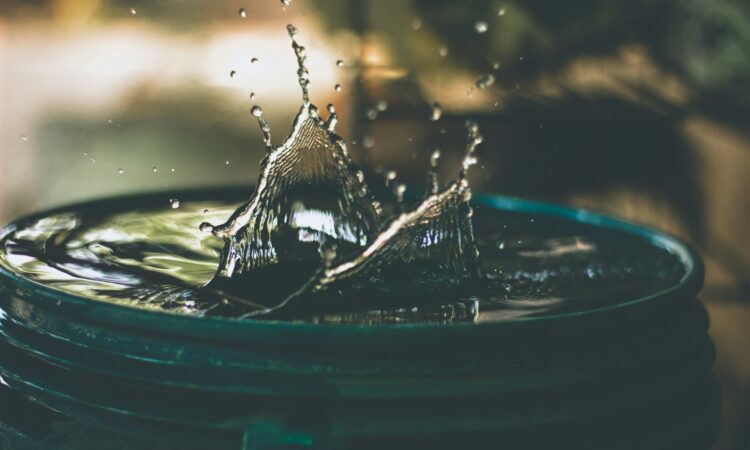Title: Photocatalytic Zinc Oxide Nanoparticles in Antibacterial Ultrafiltration Membranes for Biofouling Control
Authors: Ralfs Vevers, Akshay Kulkarni, Alissa Seifert, Kathrin Pöschel, Kornelia Schlenstedt, Jochen Meier-Haack, and Linda Mezule
Journal: Molecules
Year: 2024
DOI: https://www.mdpi.com/1420-3049/29/6/1274
Featured image by Amritanshu Sikdar is licensed under the Unsplash License
Global water scarcity is an escalating problem that affects millions of people worldwide. Although only approximately 70% of the world is water, only 3% is freshwater, with glaciers accounting for two-thirds. As a result, about 1.1 billion people worldwide lack access to fresh water, including proper sanitation and purity from various sources of contamination and biohazards (e.g. bacteria). The issues of water scarcity is further exacerbated by additional factors such as climate change (e.g. droughts, floods), anthropogenic pollution, limited management of resources, poor infrastructure, water overconsumption in agriculture and lack of access to technologies. According to UNICEF, about half of the world’s population could experience water scarcity by 2025, with approximately 700 million people that could be displaced by 2030. The lack of access to clean and safe drinking water disproportionately affects vulnerable individuals, especially those who lack access to basic hygiene, and health care. Addressing global water scarcity thus becomes critical to maintaining the health and well-being of current and future generations. While there are many practices and methods that can be employed, one method is the development of membrane filtration technologies.
Ultrafiltration systems are widely adopted for water treatment where it is used to remove various impurities and contaminants from water, making it safe for consumption and use. The technology utilizes semi-permeable membranes (with pore sizes of about 0.01 um) which allow water molecules to pass through while blocking larger particles and most microorganisms. This process not only helps in providing clean drinking water but also in treating wastewater, thus reducing the strain on freshwater resources. However, despite its effectiveness, the widespread adoption of these systems faces challenges, mainly due to membrane biofouling. Biofouling is the accumulation of microorganisms (e.g. bacteria and algae) which presents challenges as it presents opportunity for regrowth, even after 99.9% removal. Specifically, biofouling of microorganisms on membranes allows for the development of biofilm layers which protects the microorganisms from disinfection and cleaning. This reduces both water and membrane quality.
To mitigate the issue of membrane biofouling, a study by Ralfs Vevers and colleagues developed antibacterial ultrafiltration membranes with integrated photocatalytic zinc oxide nanoparticles. To test the antibacterial properties of the developed membranes, the authors conducted several tests with E. coli and natural tap water biofilm. Readers are encouraged to read the original paper to learn more about the membrane’s properties and testing methods. As an example, one method employed by the researchers was to test the permeability of membranes with and without fouling.

Zinc oxide nanoparticles were chosen because of its efficient photodegradation properties, low cost, stability, and antibacterial activity. In addition, Zinc oxide nanoparticles can also degrade other organic compounds in the water, providing additional advantages for ultrafiltration technologies. The authors not only tested single-layer membranes, but also dual-layer membranes, which are underexplored in the context of biofouling. In Figure 1, the permeability of clean water through the membrane under various conditions was tested. The results indicate that the permeability of clean water is higher with PVP which is known to increase flux. Incorporating zinc oxide to the membrane resulted in a 35% lower water flux for single-layer membranes. This effect can be due to a decrease in the pore size of the zinc oxide membrane, which contradicts previous studies that showed an increased flux with the addition of more zinc oxide nanoparticles. However, another study shows a limit to the amount of nanoparticles where porosity decreases, thus affecting the flux. Interestingly, the study shows a trade-off between permeability and rejection capabilities (the number of particles that can be removed or filtered from the water), where membranes modified with zinc oxide showed strong improvements in the rejection capabilities of particles. In addition, the modified membranes showed improvements in surface homogeneity, and antibacterial efficacy which helps contribute to its effectiveness as a potential membrane for biofouling in ultrafiltration technologies. The development of effective membrane ultrafiltration technologies is critical to tackling the global issue of water scarcity, by helping provide clean and safe drinking water to vulnerable communities.

